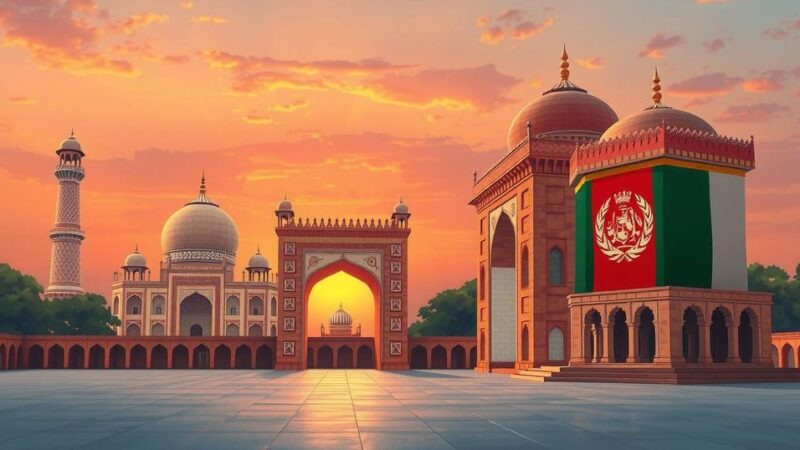India is poised to invest $200 billion in military modernization over the next decade to counter threats from China. Heightened geopolitical tensions and the need for advanced defense capabilities drive this initiative. Prime Minister Modi recently reinforced U.S.-India defense ties, procuring more U.S. equipment, while also pursuing self-sufficiency in defense production. Experts warn of challenges due to reliance on Russian systems and the U.S.’s manufacturing capacity constraints.
The latest edition of CNBC’s “Inside India” newsletter highlights India’s ambition to enhance its defense capabilities amidst rising tensions with China. With a projected budget of about $200 billion over the next decade, India aims to modernize its military significantly. The urgency in strengthening defense forces is largely attributed to geopolitical challenges posed by China’s expansionism in the region, particularly its military activities in the Indian Ocean and along the disputed border.
Experts note that China’s aggressive military posture is a crucial factor driving India’s defense spending. “China’s expansionist policies and military buildup along the border remain a serious challenge,” stated Pravin Krishna from Johns Hopkins University. Additionally, China’s naval base in Djibouti and plans to increase its fleet of aircraft carriers deployed in the Indian Ocean represent significant strategic threats, as highlighted by Pramit Pal Chaudhuri of Eurasia Group.
The recent meeting between Prime Minister Modi and President Trump emphasized a mutual interest in strengthening U.S.-India defense ties. As part of these efforts, India committed to acquiring more U.S. defense equipment, including armored vehicles and drones. Kenneth I. Juster, former U.S. Ambassador to India, remarked, “It is extraordinary that… the United States and India could announce such a broad set of actions in the defense sector.”
Despite this burgeoning partnership, challenges remain. Analysts indicate that India must navigate its dependency on Russian military systems and address the complications posed by U.S. production constraints when attempting to procure advanced technology like the F-35 fighter jet. There is hesitance concerning India’s ability to qualify for these jets, given current geopolitical circumstances and defense collaborations.
India’s defense expenditures are expected to grow annually by 8% from 2024 to 2026 as it attempts to catch up with China’s superior military budget, currently three times larger than India’s. However, capacity limitations in U.S. defense manufacturing could hinder the expeditious acquisition of new capabilities that India seeks.
In response to these challenges, India is emphasizing self-sufficiency, with companies like Hindustan Aeronautics and Bharat Electronics at the forefront of its growing defense sector. Partnerships for technology transfer, such as the one between General Electric and Hindustan Aeronautics for co-manufacturing jet engines, are essential for advancing domestic military production capabilities. “If India can find other ways to obtain technology transfer… delivery times will be accelerated,” said a confidential source.
Ultimately, India’s strategic ambitions to strengthen its defense framework and reduce foreign dependency will attract further investment from global powers, making it a pivotal player on the international stage as it balances relations with the U.S. and Russia. This unfolding scenario underscores the complexity of defense geopolitics in a rapidly evolving global landscape.
As trade discussions continue, the EU is pressing India to lower tariffs on various goods amidst negotiations for a free trade agreement, while the progress of the India-U.K. free trade agreement also appears promising. Additionally, potential entry into the Indian market by Tesla remains uncertain, despite ongoing discussions between key players. Meanwhile, fluctuations in global markets are impacting Indian equities significantly, as highlighted by recent trends in investment strategies.
In summary, India’s assertive move to bolster its defense capabilities is largely driven by increasing threats from China and regional geopolitical dynamics. Significant investment in military modernization, partnerships with the U.S., and an emphasis on self-sufficiency characterize India’s strategic approach. While challenges persist, particularly concerning procurement and dependency on foreign manufacturers, India’s preparation to enhance its defense stance signifies its growing role as a global power. Trade relations and economic policies will be pivotal as India navigates its future in an increasingly competitive environment.
Original Source: www.cnbc.com






